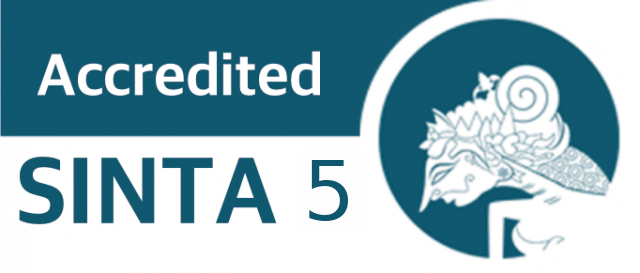Improving Student's Creativity Through Mozaic Art in SBdP Subjects
Abstract
The purpose of the study was to find out 1) The creativity of the fourth grade A MI Nurul Falah students before the activity of making mosaics was applied 2) The creativity of the fourth grade A MI Nurul Falah students when implementing the activity of making mosaics every cycle 3) Increasing students' creativity through mosaic art in the SBdP subject of class IV A MI Nurul Falah after applying the activity of making mosaics every cycle. The research approach uses the Classroom Action Research (CAR) method with a mixed approach. The research subjects were Class IV A MI Nurul Falah Jatinangor with 25 students. Research data collection techniques using observation and documentation. Based on the results of pre-cycle observations before applying the student's creativity mosaic, it was categorized as very poor with a percentage of 11.44%. In the first cycle of action I teacher activity reached a scale of 61.29%, in the first cycle of action II teacher activity reached 77.41%. Then the student activity in the first cycle of action I reached 60.75%, in the first cycle of action II student activity reached 77.16%. Meanwhile, when applying the mosaic in the second cycle of the first action, the teacher's activity reached 83.87%, in the second cycle of the second action the teacher's activity reached 90.32%. Then the student activity in the second cycle of action I reached 81.08%, in the second cycle of action II the student activity reached 86.08%. In the first cycle, based on the results of observations of student activities, the average value of the calculation was 77.16% with good criteria. In the second cycle, the average score was 86.08% with very good criteria. Thus there is an increase in creativity in each cycle with a percentage rate of 8.92%. From these data, it can be concluded that through mosaics it can increase students' creativity. So, the learning process is declared to be achieved and improved from the previous state.
Downloads
References
Elisa, S. (2018). Meningkatkan Kemampuan Kreativitas Anak Melalui Kegiatan Melukis. digilib uinsgd.
Hasnawati, H., & Anggraini, D. (2016). Mozaik Sebagai Sarana Pengembangan Kreativitas Anak Dalam Pembelajaran Seni Rupa Menggunakan Metode Pembinaan Kreativitas dan Keterampilan . Jurnal PGSD: Jurnal Pendidikan Guru Sekolah Dasar, 226-235.
Juhji, J. (2016). Peran Urgen Guru dalam Pendidikan. Studia Didaktika, 51-62.
Kusuma, I. (2021). Pengaruh Penggunaan Media Mozaik Terhadap Kreativitas Siswa Pada Mata Pelajaran Seni Budaya dan prakarya di kelas IV SDN 166 Seluma . e-Repository Perpusatakaan IAIN Bengkulu.
Miranda, D. (2016). Upaya Guru Dalam Mengembangkan Kreativitas Anak Usia Dini di Kota Pontianak. Jurnal Pembelajaran Prospektif, 60-67.
Moehar, D. (2002). Pengantar Ilmu Pertanian. Jakarta: Bumi Aksara.
Mulyasa, E. (2013). Praktik Penelitian Tindakan Kelas: Menciptakan Perbaikan Berkesinambungan. Bandung: Rosda.
Putri, T. S., & Suprayitno. (2022). Pemanfaatan Bahan Daur Ulang Untuk Meningkatkan Kreativitas Dalam Pembelajaran SBdP Materi Kolase Siswa Kelas II Madrasah Ibtidaiyah Darul Muta'alimin Tawangsari Sidoarjo. Jurnal Penelitian Pendidikan Guru Sekolah Dasar, 147-160.
Ramdhani, F. (2022). Penerapan Metode Demonstrasi Melalui Pembelajaran Kolase Terhadap Kreativitas Peserta Didik Pada Mata Pelajaran SBdP Kelas IV. repository radenintan.
Sitepu. (2019). Pengembangan Kreativitas Siswa. Bogor: Guepedia.
Salahudin, A. (2019). Bimbingan dan Konseling. Bandung: CV. Pustaka Setia.
Sudirman, A. (2022). Metodologi Penelitian: Pendekatan Multidisipliner. Bandung: Media Sains Indonesia.
Sugiyono. (2017). Metode Penelitian Kuantitatif, Kualitatif, dan R&D. Bandung: Alfabeta.
Suhernawan, R., & Nugraha, R. A. (2010). Seni Rupa. Jakarta: PT. Sinergi Pustaka Indonesia.
Wiriatmadja, R. (2009). Metode Penelitian Tindakan Kelas. Jakarta: Balai Pustaka.





.png)

.jpg)



